Adriano L. I. Oliveira
An Investigation of Feature Selection and Transfer Learning for Writer-Independent Offline Handwritten Signature Verification
Oct 19, 2020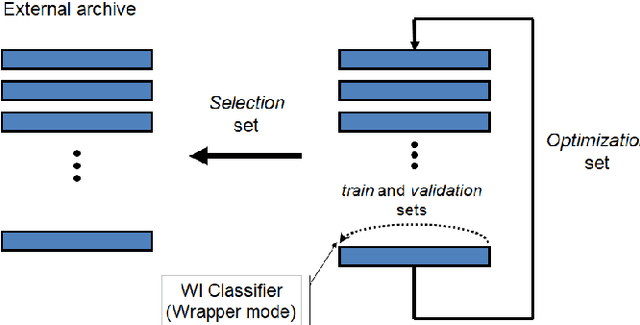
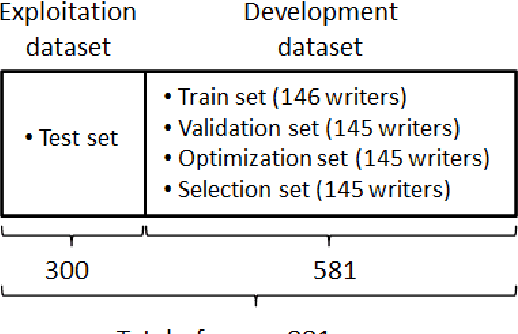
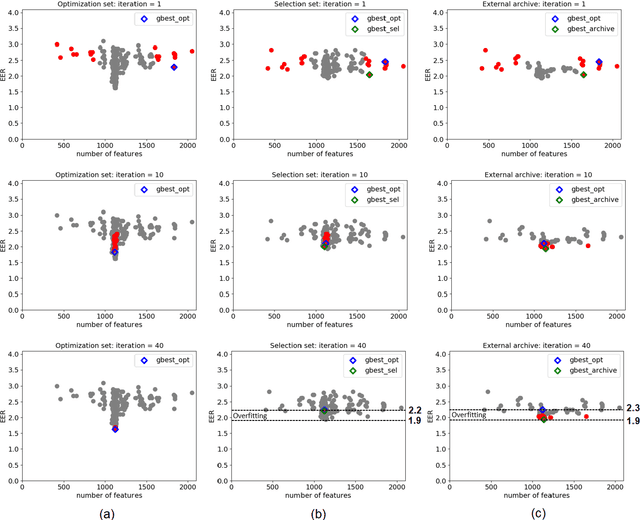
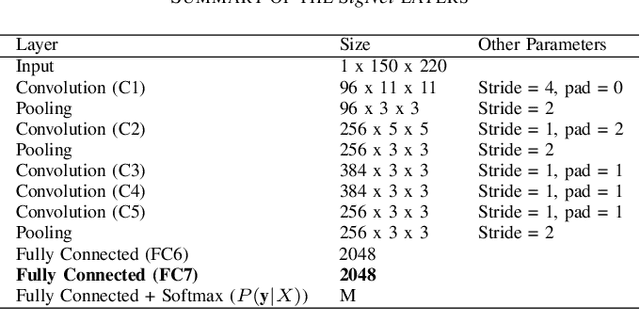
Abstract:SigNet is a state of the art model for feature representation used for handwritten signature verification (HSV). This representation is based on a Deep Convolutional Neural Network (DCNN) and contains 2048 dimensions. When transposed to a dissimilarity space generated by the dichotomy transformation (DT), related to the writer-independent (WI) approach, these features may include redundant information. This paper investigates the presence of overfitting when using Binary Particle Swarm Optimization (BPSO) to perform the feature selection in a wrapper mode. We proposed a method based on a global validation strategy with an external archive to control overfitting during the search for the most discriminant representation. Moreover, an investigation is also carried out to evaluate the use of the selected features in a transfer learning context. The analysis is carried out on a writer-independent approach on the CEDAR, MCYT and GPDS datasets. The experimental results showed the presence of overfitting when no validation is used during the optimization process and the improvement when the global validation strategy with an external archive is used. Also, the space generated after feature selection can be used in a transfer learning context.
KutralNet: A Portable Deep Learning Model for Fire Recognition
Aug 16, 2020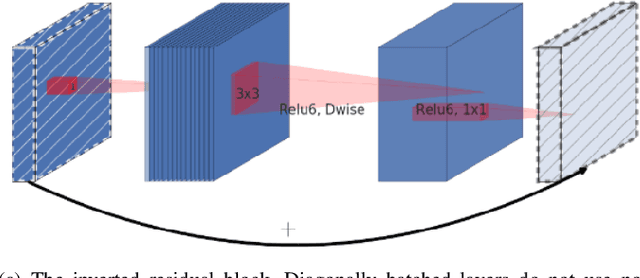
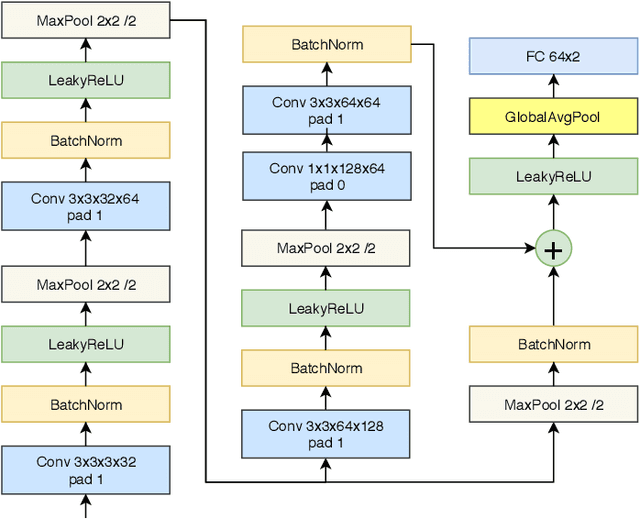
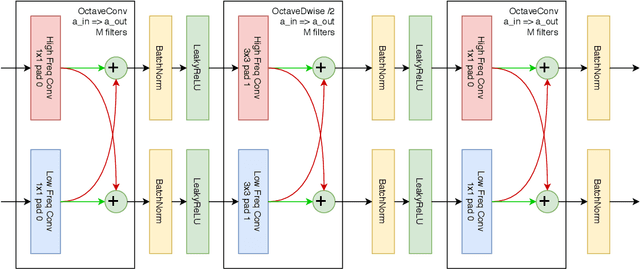
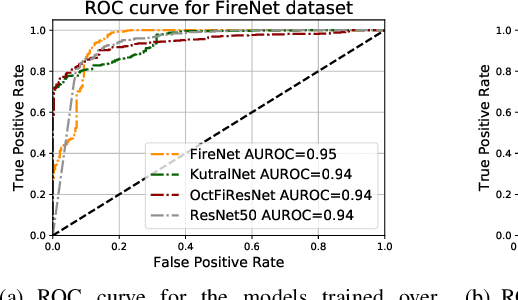
Abstract:Most of the automatic fire alarm systems detect the fire presence through sensors like thermal, smoke, or flame. One of the new approaches to the problem is the use of images to perform the detection. The image approach is promising since it does not need specific sensors and can be easily embedded in different devices. However, besides the high performance, the computational cost of the used deep learning methods is a challenge to their deployment in portable devices. In this work, we propose a new deep learning architecture that requires fewer floating-point operations (flops) for fire recognition. Additionally, we propose a portable approach for fire recognition and the use of modern techniques such as inverted residual block, convolutions like depth-wise, and octave, to reduce the model's computational cost. The experiments show that our model keeps high accuracy while substantially reducing the number of parameters and flops. One of our models presents 71\% fewer parameters than FireNet, while still presenting competitive accuracy and AUROC performance. The proposed methods are evaluated on FireNet and FiSmo datasets. The obtained results are promising for the implementation of the model in a mobile device, considering the reduced number of flops and parameters acquired.
A white-box analysis on the writer-independent dichotomy transformation applied to offline handwritten signature verification
Apr 14, 2020

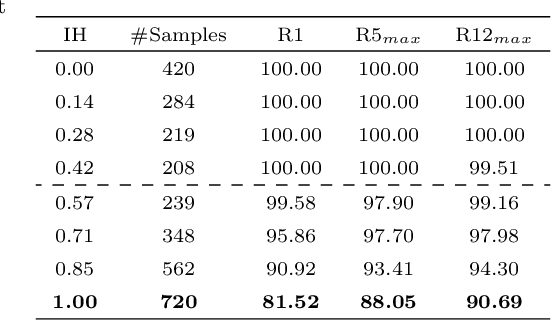

Abstract:High number of writers, small number of training samples per writer with high intra-class variability and heavily imbalanced class distributions are among the challenges and difficulties of the offline Handwritten Signature Verification (HSV) problem. A good alternative to tackle these issues is to use a writer-independent (WI) framework. In WI systems, a single model is trained to perform signature verification for all writers from a dissimilarity space generated by the dichotomy transformation. Among the advantages of this framework is its scalability to deal with some of these challenges and its ease in managing new writers, and hence of being used in a transfer learning context. In this work, we present a white-box analysis of this approach highlighting how it handles the challenges, the dynamic selection of references through fusion function, and its application for transfer learning. All the analyses are carried out at the instance level using the instance hardness (IH) measure. The experimental results show that, using the IH analysis, we were able to characterize "good" and "bad" quality skilled forgeries as well as the frontier region between positive and negative samples. This enables futures investigations on methods for improving discrimination between genuine signatures and skilled forgeries by considering these characterizations.
Improving BPSO-based feature selection applied to offline WI handwritten signature verification through overfitting control
Apr 07, 2020
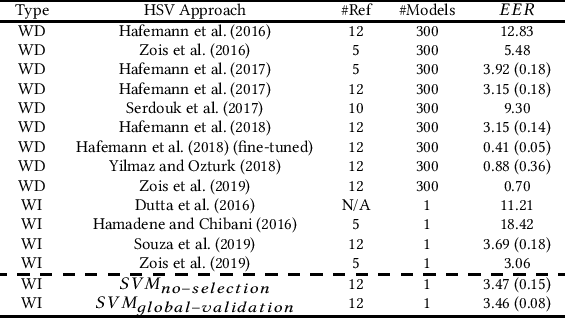
Abstract:This paper investigates the presence of overfitting when using Binary Particle Swarm Optimization (BPSO) to perform the feature selection in a context of Handwritten Signature Verification (HSV). SigNet is a state of the art Deep CNN model for feature representation in the HSV context and contains 2048 dimensions. Some of these dimensions may include redundant information in the dissimilarity representation space generated by the dichotomy transformation (DT) used by the writer-independent (WI) approach. The analysis is carried out on the GPDS-960 dataset. Experiments demonstrate that the proposed method is able to control overfitting during the search for the most discriminant representation.
Squeezed Deep 6DoF Object Detection Using Knowledge Distillation
Mar 31, 2020



Abstract:The detection of objects considering a 6DoF pose is common requisite to build virtual and augmented reality applications. It is usually a complex task witch requires real-time processing and high precision results for an adequate user experience. Recently, different deep learning techniques have been proposed to detect objects in 6DoF in RGB images but they rely on high complexity networks, requiring a computational power that prevents them to work on mobile devices. In this paper, we propose an approach to reduce the complexity of 6DoF detection networks while maintaining accuracy. We used Knowledge Distillation to teach portables Convolutional Neural Networks (CNN) to learn from a real-time 6DoF detection CNN. The proposed method allows real-time applications using only RGB images while decreasing the hardware requirements. We used the LINEMOD dataset to evaluate the proposed method and the experimental results show that the proposed method reduces the memory requirement almost 99\% in comparison to the original architecture reducing half the accuracy in one of the metrics. Code is available at https://github.com/heitorcfelix/singleshot6Dpose
Distinction Maximization Loss: Fast, Scalable, Turnkey, and Native Neural Networks Out-of-Distribution Detection simply by Replacing the SoftMax Loss
Aug 20, 2019



Abstract:Recently, many methods to reduce neural networks uncertainty have been proposed. However, most of the techniques used in these solutions usually present severe drawbacks. In this paper, we argue that neural networks low out-of-distribution detection performance is mainly due to the SoftMax loss anisotropy. Therefore, we built an isotropic loss to reduce neural networks uncertainty in a fast, scalable, turnkey, and native approach. Our experiments show that replacing SoftMax with the proposed loss does not affect classification accuracy. Moreover, our proposal overcomes ODIN typically by a large margin while producing usually competitive results against a state-of-the-art Mahalanobis method despite avoiding their limitations. Hence, neural networks uncertainty may be significantly reduced by a simple loss change without relying on special procedures such as data augmentation, adversarial training/validation, ensembles, or additional classification/regression models.
A writer-independent approach for offline signature verification using deep convolutional neural networks features
Jul 26, 2018



Abstract:The use of features extracted using a deep convolutional neural network (CNN) combined with a writer-dependent (WD) SVM classifier resulted in significant improvement in performance of handwritten signature verification (HSV) when compared to the previous state-of-the-art methods. In this work it is investigated whether the use of these CNN features provide good results in a writer-independent (WI) HSV context, based on the dichotomy transformation combined with the use of an SVM writer-independent classifier. The experiments performed in the Brazilian and GPDS datasets show that (i) the proposed approach outperformed other WI-HSV methods from the literature, (ii) in the global threshold scenario, the proposed approach was able to outperform the writer-dependent method with CNN features in the Brazilian dataset, (iii) in an user threshold scenario, the results are similar to those obtained by the writer-dependent method with CNN features.
 Add to Chrome
Add to Chrome Add to Firefox
Add to Firefox Add to Edge
Add to Edge